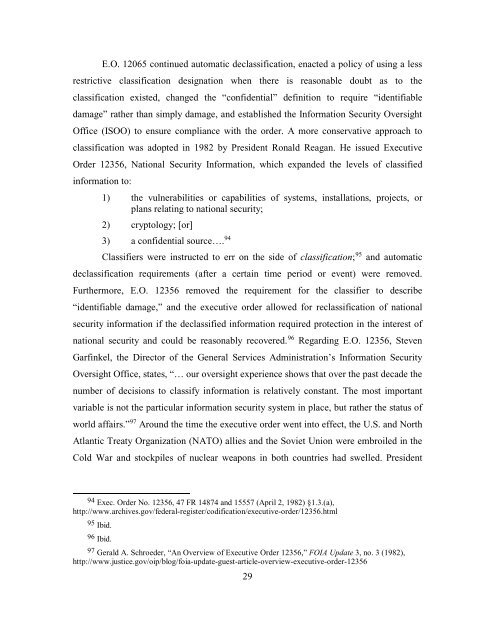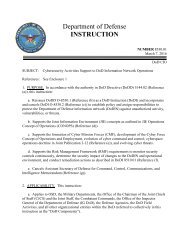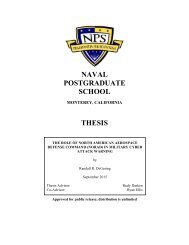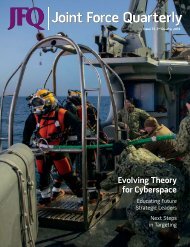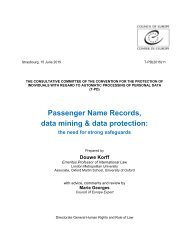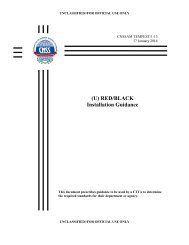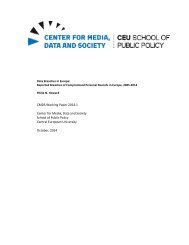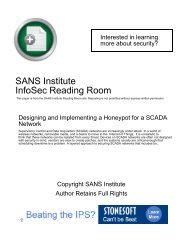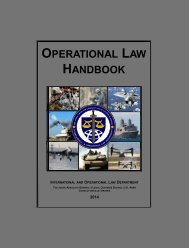SCHOOL THESIS
?view&did=768625
?view&did=768625
Create successful ePaper yourself
Turn your PDF publications into a flip-book with our unique Google optimized e-Paper software.
E.O. 12065 continued automatic declassification, enacted a policy of using a less<br />
restrictive classification designation when there is reasonable doubt as to the<br />
classification existed, changed the “confidential” definition to require “identifiable<br />
damage” rather than simply damage, and established the Information Security Oversight<br />
Office (ISOO) to ensure compliance with the order. A more conservative approach to<br />
classification was adopted in 1982 by President Ronald Reagan. He issued Executive<br />
Order 12356, National Security Information, which expanded the levels of classified<br />
information to:<br />
1) the vulnerabilities or capabilities of systems, installations, projects, or<br />
plans relating to national security;<br />
2) cryptology; [or]<br />
3) a confidential source…. 94<br />
Classifiers were instructed to err on the side of classification; 95 and automatic<br />
declassification requirements (after a certain time period or event) were removed.<br />
Furthermore, E.O. 12356 removed the requirement for the classifier to describe<br />
“identifiable damage,” and the executive order allowed for reclassification of national<br />
security information if the declassified information required protection in the interest of<br />
national security and could be reasonably recovered. 96 Regarding E.O. 12356, Steven<br />
Garfinkel, the Director of the General Services Administration’s Information Security<br />
Oversight Office, states, “… our oversight experience shows that over the past decade the<br />
number of decisions to classify information is relatively constant. The most important<br />
variable is not the particular information security system in place, but rather the status of<br />
world affairs.” 97 Around the time the executive order went into effect, the U.S. and North<br />
Atlantic Treaty Organization (NATO) allies and the Soviet Union were embroiled in the<br />
Cold War and stockpiles of nuclear weapons in both countries had swelled. President<br />
94 Exec. Order No. 12356, 47 FR 14874 and 15557 (April 2, 1982) §1.3.(a),<br />
http://www.archives.gov/federal-register/codification/executive-order/12356.html<br />
95 Ibid.<br />
96 Ibid.<br />
97 Gerald A. Schroeder, “An Overview of Executive Order 12356,” FOIA Update 3, no. 3 (1982),<br />
http://www.justice.gov/oip/blog/foia-update-guest-article-overview-executive-order-12356<br />
29


